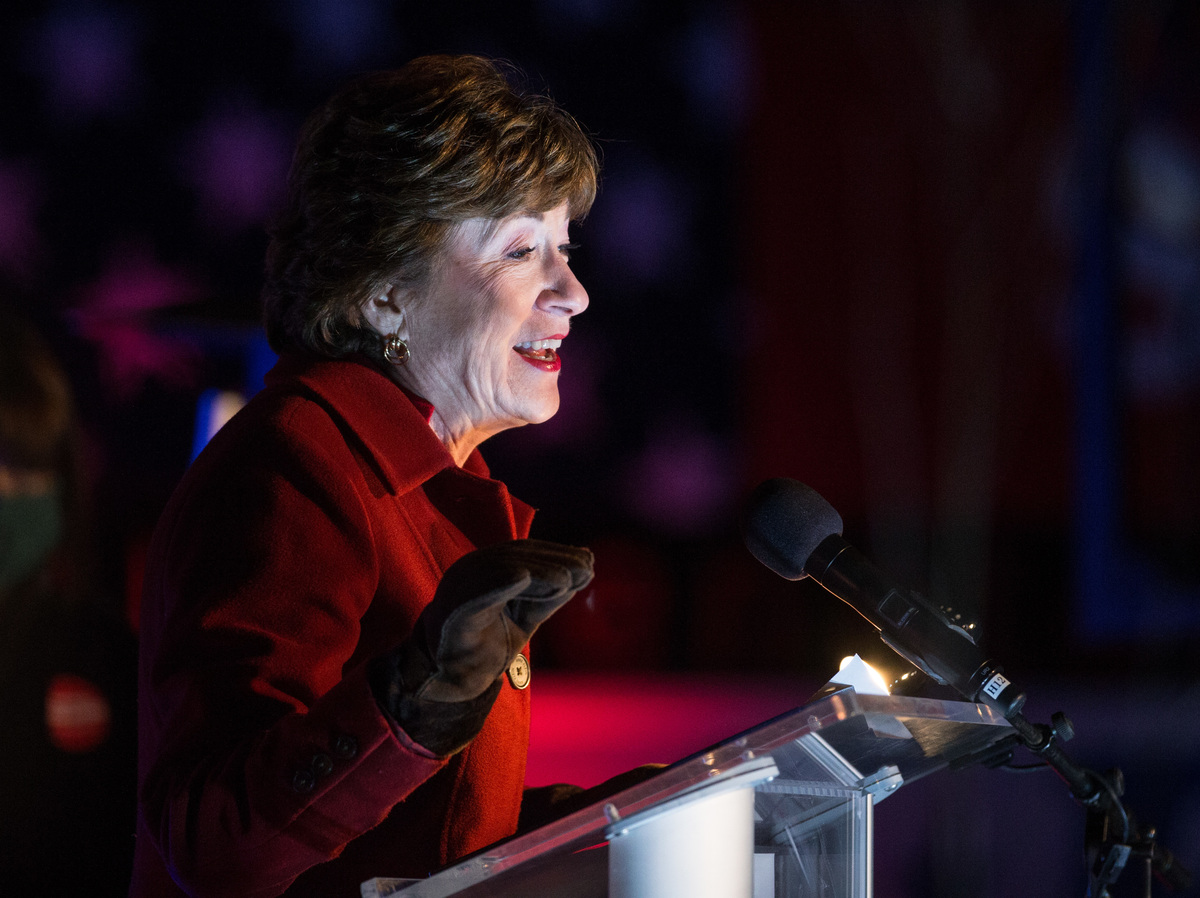Republican Senator Susan Collins receives election night notes for her supporters and staff on November 3 in Bangor, Maine. Collins slipped four percentage points in the polls average ahead of Election Day but won by 9 percentage points.
Scott Eisen / Getty Images
Hide the caption
Toggle caption
Scott Eisen / Getty Images

Republican Senator Susan Collins receives election night notes for her supporters and staff on November 3 in Bangor, Maine. Collins slipped four percentage points in the polls average ahead of Election Day but won by 9 percentage points.
Scott Eisen / Getty Images
The Republicans outperformed the polls, up and down in the 2020 elections, much to the surprise of many Republican political activists and poll researchers.
To be clear, Democrat Joe Biden defeated President Trump. The Democrats will still control the House of Representatives and will still have a chance to choose the Senate.
But the Republicans have made gains in the House – so far they’ve had five seats (with 22 races not yet called). Given their supposed power in the suburbs, the Democrats were expected to enlarge their majority.
This is becoming increasingly likely the closer elections get – and not just because of public opinion polls. This was also the expectation of Republicans, who polled, campaigned, ran, and delivered.
In the Senate, the Democrats have so far won one seat, but they need three with Biden winning to take over. Democrats still have a chance to do so in two rounds of Georgia’s run-off. But this is possible and not likely.
It was not expected to be this way. The Democrats have played a lot of Senate races that were not expected to run their course at the start of the 2020 session, in places like Kansas and Montana.
To be sure, many of the races in the Senate were expected to be close, perhaps with very slim margins, and the Democratic-controlled Senate was never a sure result. But when you look at the average polls in the last week of the election versus the final result, it’s clear that Republicans have been underrepresented across the country.
All of these races, with the exception of Colorado and Alabama, were ranked single in the polls. Colorado, the state that Biden won easily, ended up near average. Alabama, the state that Trump won the most, was a bigger blast than expected.
Many of the supposedly narrower races did not win hard at all. Maine is perhaps the most picturesque state. Biden won the state by 9 percentage points, but the incumbent Republic, Susan Collins, won re-election by 9 points.
Not only did Collins drop 4 points ahead of Election Day in average polls in the week before the election, but she advanced one – one – poll every 2020. That was in July. That’s one poll out of nearly thirty.
In South Carolina, money poured into Democrat Jaime Harrison, who seemed to actually have a chance to defeat incumbent Senator Lindsey Graham. The Cook policy report, which speaks to committees that help elect candidates in each segment, and others classed the race as negligent.
Opinion polls seemed to confirm this, showing the race was tied. But in the end, it wasn’t even close. Graham won by 10 percentage points. It was always tough for a Democrat to win statewide in South Carolina in a presidential year.
Alaska’s margin can shrink with the votes still coming out in the mail and only 58% of the vote, so put an asterisk next to that, but this race was supposed to be a 3-point race.
There will be an account – again – within the polling industry. Survey researchers are already combing their numbers, looking for patterns of error that occurred.
Some theories at this stage include:
Early voting: Surveys with too many people in their samples say they will vote early. Pollsters have had a hard time adjusting to this, because there is no historical trend they have to go.
Democratic response: Democrats and independents with democratic leanings appeared to be more willing to talk to pollsters, and the pro-Trump Republicans did not want to participate as much due to their deep mistrust and disregard for opinion polls and the media.
This is not the idea of a “shy” Trump voter. While poll researchers – Democrats, Republicans, and nonpartisans – all found that people are less willing to say they are Trump supporters of their friends and families, especially women, they found little evidence that they do not tell pollsters they support the president.
The bigger problem may be the unwillingness of Trump supporters to participate Absolutely. This might seem logical, given the continued underestimation of Republican voting, especially in Republican-leaning states.
Trump phenomenon: The other thing that’s hard to pin down is whether this is something unique when Trump is on the ballot. It has distorted opinion polls and the media to a greater degree than any other presidential candidate. Supporting the idea that this was just a Trump phenomenon is that the polls were correct in the 2018 midterm elections and nearly every special election in the past four years.
These are just early theories, but it is likely a best practice to put less stock in horse racing surveys as an accurate science, and to use rough and more professional measures, including demographics, ad spend, and special campaign survey reports to find identifying where campaigns think are important and where they might be. The candidate gets a chance or not.












































